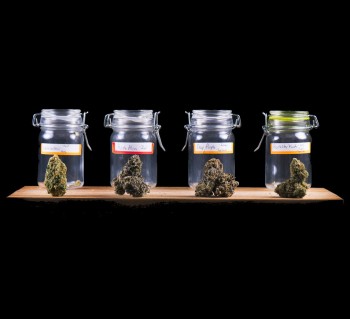How to Make Cannabis Eco-Friendly
How to Make Marijuana More Eco-Friendly and Better for the Environment from CannabisNet on Vimeo.
One of the biggest concerns opponents of cannabis have is that it is ‘damaging to the environment’. However, this isn’t necessarily true. Of course, currently there are plenty of illegal grows in forests and public lands, but this isn’t “cannabis” as was meant to be.
Another concern is the fact that marijuana takes a lot of water to grow not to mention the energy demand per crop. All of these elements elevates the carbon footprint of each crop and while cannabis could be a potential boost for the environment, the current system forces it to be a carbon guzzler.
For those of you growing outdoors, you don’t have to worry. You’re essentially growing tomatoes and your carbon footprint is relatively low. The problem lies on the shoulders of the cannabis industry, those who need to produce tons of green for the consumer market.
That’s why today we’re going to be talking about a few changes the cannabis industry should consider to be more “Eco-Friendly”.
Shifting to Solar and other Alt Energy Devices
One of the biggest costs associated with cultivating cannabis on a mass scale is the energy consumption to keep the lights on. These lights take a lot of electricity and for anyone who grows commercially, their light bills are usually through the roof.
One solution is to divert some of the energy expenses by using solar. Of course, investing into a solar plant will cost you a lot of money initially, but the savings you’ll incur over time will eventually pay for the plant itself.
Furthermore, if I were to grow commercially I’d not only rely on Solar. There are several different ways to harness energy without using electricity. For instance, if you were to combine solar with something like a Stirling Engine, you’ll be able to increase the production of energy significantly within your grow. In fact, there are plenty of alternatives to producing energy, you just have to be creative.
Solar could be used to power Sterling engines throughout the day and store energy in batteries for the night. Obviously, you’d need to set your light cycles within your grow to be ‘on’ when the most energy is being produced. Nonetheless, implementing alt-energy devices and creating an interconnected system will most assuredly reduce your carbon footprint.
Greenhouse Grow House
Canada is already implementing the use of large scale green houses to grow their weed. These clear buildings rely on natural sunlight to grow their crops. This reduces the energy expense by up to 70% and provides year-long growing seasons.
Due to the fact that cannabis is still not 100% legal everywhere, the expansion of greenhouse grow houses is still in its infancy. Once we remove all the political red-tape surrounding the plant, I can imagine more commercial grows adopting this method of cultivation.
Invest into Desalination plants
I don’t know why we aren’t doing this irrespective of the cannabis industry. Desalination plants work. We can take a look at Israel where they had a serious water problem. There simply wasn’t enough fresh water for the people to drink or to grow crops.
Ten years later, Israel has no more water problem. How did they do this? They simply invested in two desalination plants that now supplies the vast majority of their fresh water for crops and for human consumption.
Places such as California, South Africa and literally any coastal city should have some form of desalination plant because after all, the vast majority of the water on earth is in the ocean.
“But it’s expensive!” some might scream. Well, so is war but people don’t complain that the U.S government is spending $32.08 million dollars every hour on all wars they are fighting.
Their total expenditure on wars since 2001 is a whopping $4,683,258,000.
The cost of a desalination plant is roughly $100 million to serve 300,000 people, not including the infrastructure to get the water to the people.
So for every 3 hours we spend on war, we could be supplying 300,000 people with water each year.
The cannabis industry also generates billions of dollars each year, meaning that if enough cannabis companies can get together, they could easily create a desalination plant that could supply all the fresh water needed for a massively large scale cultivation scheme.
Of course, I am confident that this will probably never happen, but I do believe it’s important to shed light on these issues, especially if we’re talking about being “eco-friendly”.
Unleash the Hemp!
Finally, to be even more eco-friendly, there should be large scale hemp plantations all around. Not only does hemp help clean out carbon from the air, it also helps revitalize the ground where its grown.
While cannabis might have a decently large carbon footprint under the current system, in the future we will become more efficient with our energy usage and water usage.
How to Make Marijuana More Eco-Friendly and Better for the Environment from CannabisNet on Vimeo.
OTHER STORIES YOU MAY ENJOY...
HOW HEMP CAN SAVE OUR PLANET, CLICK HERE.
OR..
HOW CANNABIS LEGALIZATION CAN SAVE THE PLANET, CLICK HERE.
OR..
ECO-FRIENDLY WEED, CAN THE INDUSTRY MOVE FAST ENOUGH?








